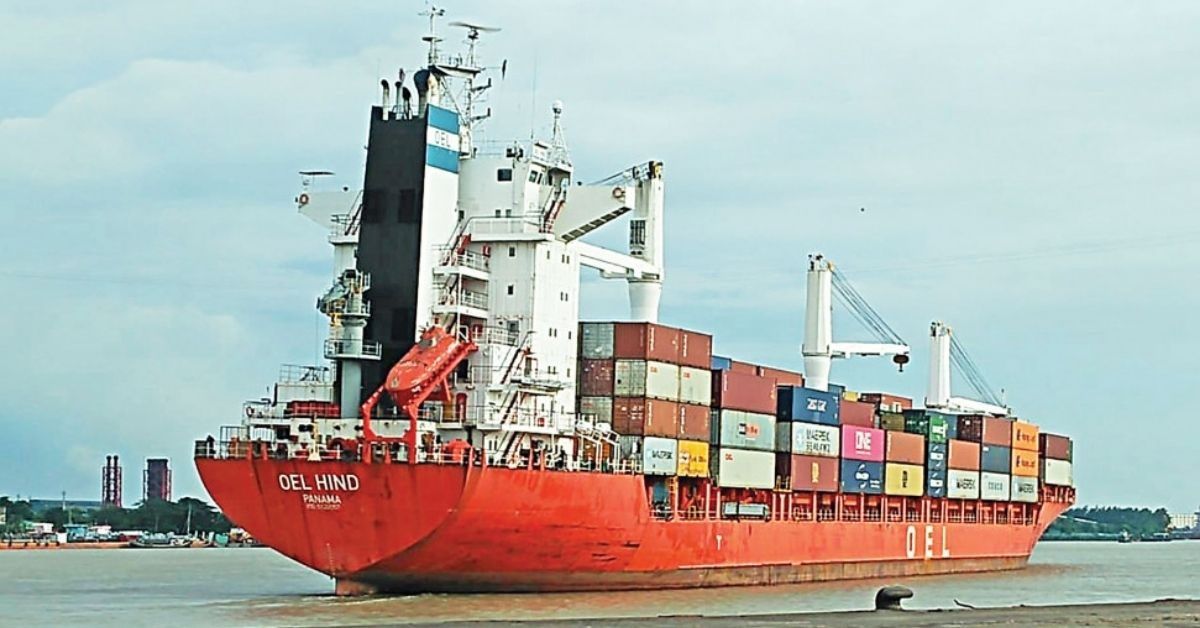A recessionary trend in the majority of the consumption economies that has pushed down the demand for discretionary goods will see container shipping charter rates slide further 30-50% in 2023.
Container shipping charter rates are set for a course correction after touching historical highs in 2021 and staying elevated so far this year, according to a report. It also expects margins of the Indian shippers squeezing this fiscal even as they will be higher than the pre-Covid level.
Charter rates were up 156 per cent year-on-year for the first seven months of this year, according to Crisil Research.
Over the remaining months, however, the rates are expected to decline, though still ending the year 40-70 per cent higher, it said.
These rates are likely to slide a further 30-50 per cent in 2023 on account of the expected recessionary environment in the majority of the consumption economies and consequent fall in demand for discretionary goods, according to the report.
It also noted that a widely anticipated recessionary environment is expected to weigh on demand in key consumption countries in the West towards the end of the year, among other factors for the anticipated further softening in rates.
A large part of the demand pick-up in 2021 — and thereby the runup in charter rates — had also stemmed from a rise in demand for discretionary goods in major consumer countries in the West, which is seen reversing now, the report observed.
Tankers command a major share at 57 per cent in the overall fleet of the Indian shipping industry, followed by the container segment which accounts for 22 per cent.
The dry bulk segment and others account for 17 per cent and 4 per cent share, respectively.
Hence, the Indian shipping players’ profitability is largely swayed by the tanker segment, according to Crisil research.
However, the industry’s high margins in fiscals 2021 and 2022 were because of historically high charter rates in the container and dry bulk segments, though charter rates in the tanker segment declining slightly in fiscal 2022, according to the report.
The outsized impact of the lower share container segment will percolate into fiscal 2023 as well, with limited ship movement on account of likely decline in trade leading to a slight contraction in overall industry margins, which are projected at 25-30 per cent compared to estimated 33-38 per cent in the previous fiscal, it stated.
However, the margins will still be higher than the pre-pandemic level owing to favourable dynamics, which have lowered the variable expenses of shippers.
According to the report, many ship owners decided to retire or stop sailing some of their fleet due to underutilisation in the aftermath of Covid-19. This translated into higher charter rates in the second half of fiscal 2021 as fleet supply was lower vis-a-vis the sudden surge in demand caused by the pick-up in the festive seasons.
It noted that container trade growth rate is also expected to slow marginally in 2022.
Crisil Research said that improvement in personal consumption expenditure in the US supported high charter rates post-2020 and noted that while ship owners began deploying fleet with the uptick in demand, it was highly disproportionate to the increase in demand, and thereby widened the demand-supply gap.
Container production in China slowed as companies in the country shifted production to infrastructure activities because of the government’s stimulus towards infrastructure, it said.
Given all these, while trade has sustained so far, the growth rate in 2022 is expected to be lower on-year due to inflationary pressures crimping demand for discretionary goods in the second half, Crisil Research said.







